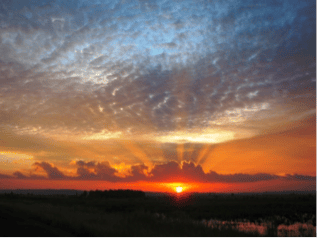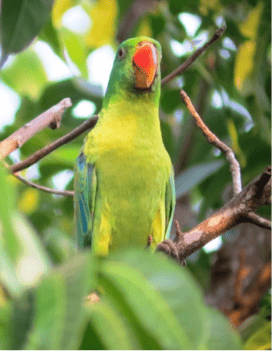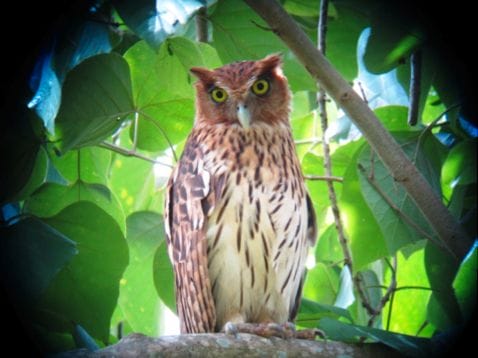There has been a lot of interest lately in seeing big numbers of birds. There was a movie about a big year and this July 2012 the WBCP is launching a Philippine Birds Big Year contest. WBCP member Melanie Tan shares how she reached her own big number in her life list.
space
How I Reached 389 Birds
by Melanie Tan
I have always been fascinated with wildlife, even as a little girl. Today bird watching is one of the many activities I enjoy doing to commune with nature. For me, bird watching is addicting. Once you get hooked, there’s no turning back. You just have to keep going. I enjoy seeing not only the beauty of birds but also the beauty of their environment.
I first tried out birding back in 2002. I was a member of Myzoo Volunteer Group Foundation when a hardware tycoon joined our group and said, “Why not have birdwatching as an activity?” One of the WBCP founders and a very good friend the ice cream tycoon agreed. After that we started going around Ateneo, UP and Mt. Palay-Palay. There were also other people from a different NGO with us back then. When we started, we didn’t even know that the brown bird with the yellow vent is called a Yellow-vented Bulbul! With time and the help of Kennedy guide and some biologist friends, we learned what the are called. I officially joined the WBCP in 2007. It took me a couple of years before I joined the club!
My Life List
At first my life list was composed mainly of backyard birds and a few lowland forest birds. I would just remember what birds I have seen. But after having seen more than fifty species, I started writing them down in a notebook. Why do I keep a list? I have two reasons, first mainly because I have a very poor memory. I need to keep a list to remember what I have seen. Second, I sometimes check the list to see what birds I haven’t seen yet and from there decide where to go for my next trip.
In the beginning, I never really bothered counting my lifers. But there was one occasion in Palawan, when one of my fellow birders celebrated seeing his 200th bird. That got me thinking, “How many have I seen? Maybe I should start counting so there will also be a reason for me to celebrate!” That year when I joined a bird tour, I printed out my life list on paper. I started keeping count, but it was time consuming to always count and add up each page. So I changed my style. I now keep my list in excel form so I can easily sum it up. It should come out something like this:
The First 150 Birds – Newbie Birding
When I was a newbie, I grabbed every opportunity to join club trips and activities. It was a good place to get to know people and learn about different kinds of birds, improve your Identification skills, and learn where and how to see them. These trips also helped identify what kind of birds I’m more into, whether it is waders or forest birds. For me I’m more into forest birds because of their nice colors, beautiful calls and the challenge of getting to them. For some they love the waders more because of challenge in identifying them and mostly because you can lounge around and enjoy watching them. As a newbie I would get mesmerized by the sight of Olive-backed Sunbirds, Black-naped Orioles and Common Kingfishers. Before the year ended, I was captivated by the Blue-naped Parrots, Woodpeckers and Hornbills.

Sophomore Year Birding: Learning How to Get the Most Out of a Trip
On my second year as a birder I was already craving for the Philippine Eagle. I was lucky enough to be asked to join a trip to see the nest of the Philippine Eagle in the wild and also have the chance to interact with the community. Some very nice looking forest birds were just lounging around outside our cottage: Black and Cinnamon Fantail, McGregor’s Cuckoo Shrike, Blue-capped Wood Kingfisher and Cinnamon Ibon to name a few. I learned to maximize my time when going on trips that are far. For example, when in Mindanao instead of birding for two days I make it three so if I miss out on something I can always go back and try my luck on the last day. If I didn’t miss out on a target bird, then I can proceed with plan B and explore new sites in the area on the last day. It’s ok to keep on going back to the same site for bird watching, but it’s good to also explore new sites to add lifers to your list.
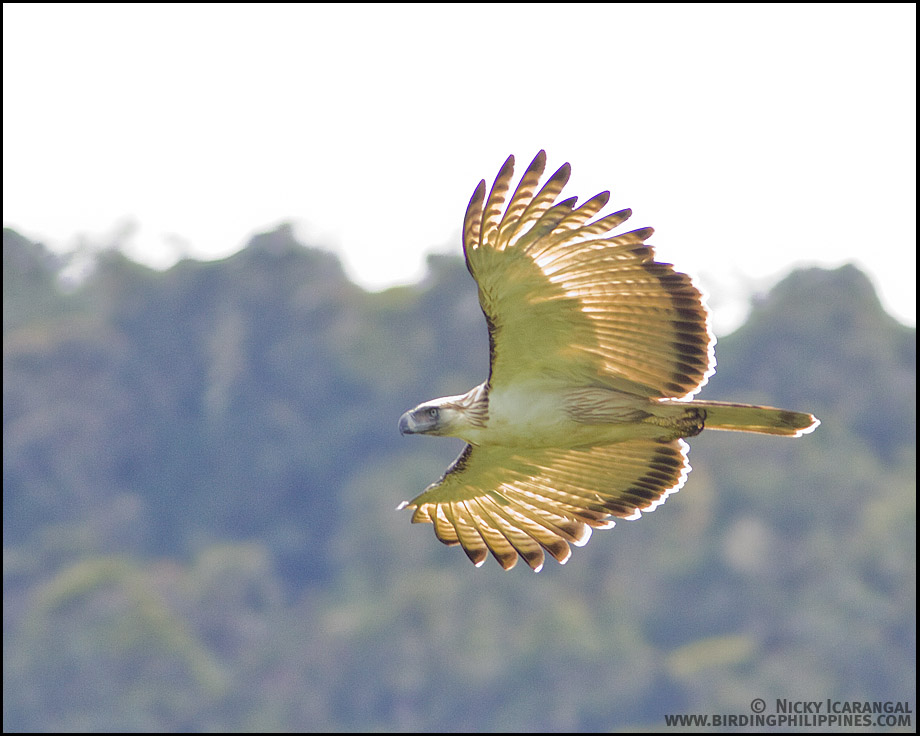
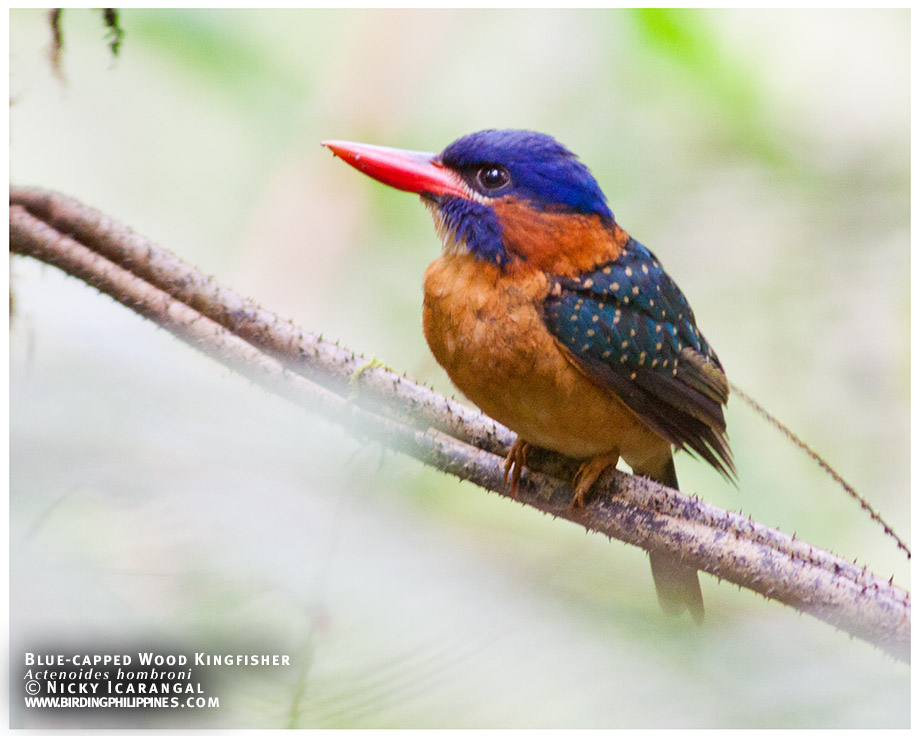
Third and Fourth Year Birding: Learning How to Plan Ahead of Time
I was very happy with my list but I felt like I could have even more birds. So on my third year I joined a bird tour so I could explore other places. I went to Palawan and this time and bagged 44 lifers in that trip. The Palawan Hornbill, Palawan Peacock, Stork-billed Kingfisher and Javan Frogmouth were my favorite there. I was so happy with that trip that before the year ended I was already checking for long weekends on the next calendar year. I also booked as many flights as I could on every opportunity of fare. I was already planning my own trips on my fourth year. I learned that instead of waiting for a trip, it’s ok to make your own trip and invite others to join you. I was surprised at how willing a lot of members are to go out and bird even in far flung places. If a trip happens not to push through, you should just have a positive attitude. Be patient and try again. Don’t let one mishap bring you down. By this time I had a lot of birds on my life list, but the craving to see more birds doesn’t stop!

Fifth Year to Present: Target Birding and Twitching
From the fifth year until now, I mostly go target birding. It’s not bad to have a goal or wish list. I go back to places I have been to before and look for birds that I have missed before. I go to new areas and look for particular endemics in that place. I also volunteered for oculars or surveys in areas that requested assistance. Recently, I went to Romblon for the Tablas Drongo and other subspecies of birds that are endemic there. I also do twitching for birds that I haven’t seen, but are suddenly found somewhere near, like the Philippine Eagle Owl and Ashy Ground Thrush.
Over time, after having seen more than half of the species that can be found in the Philippines, my birding style has changed. It is harder now to get lifers. In some instances I will need to prepare for more strenuous trips, look for new sites to visit and watch out for news on what bird I can twitch.
Reaching Out Through Birding
Bird watching started out as a hobby but as each year passes you learn more because you see more and you become more aware! In my experience, bird watching is best enjoyed when shared, not only with good friends, but with everyone. While birding in an area you can get the community or people around you involved. It may be a kid along the road checking out what your doing, the fisherman by the shore or the farmer at the field. Talk to them, let them look through your scope or bins and you will be surprised at how much you can learn from each other. It is very heartwarming to see their faces brighten up when they see the birds up close through the scope for the first time. And you’ll never know, they might tell where you can find your next target bird or show you a lifer!



